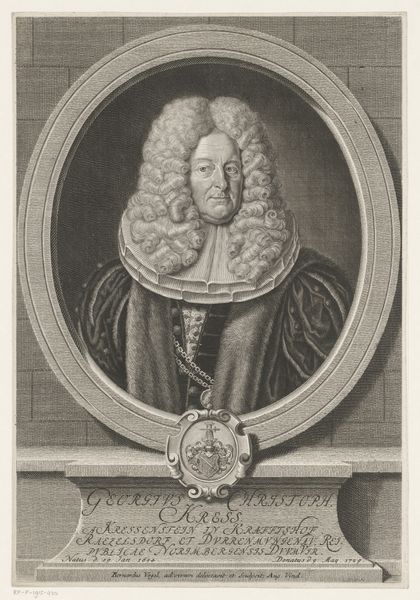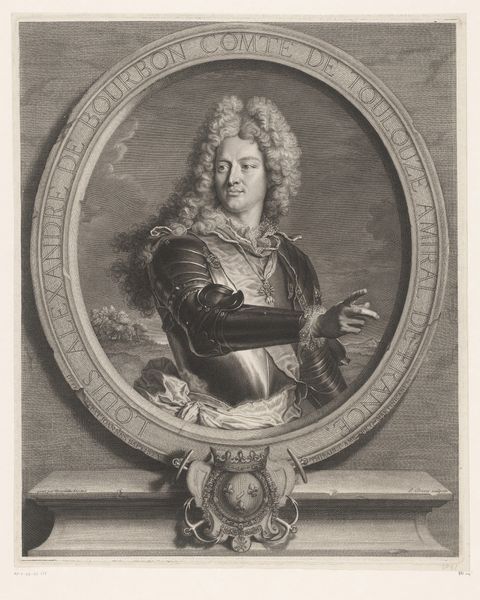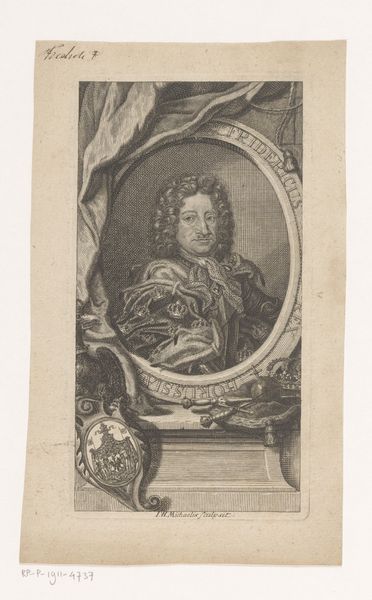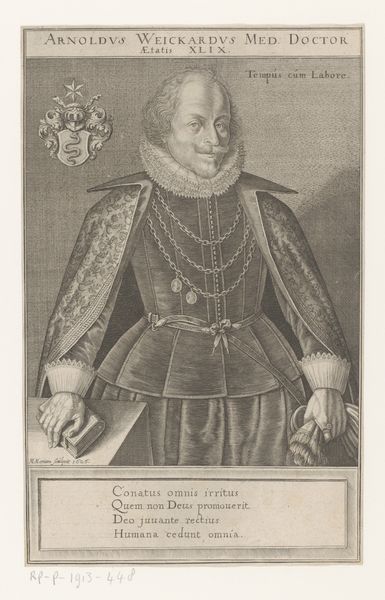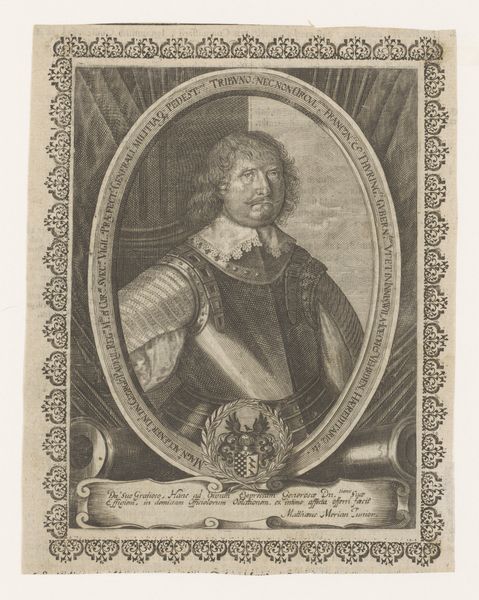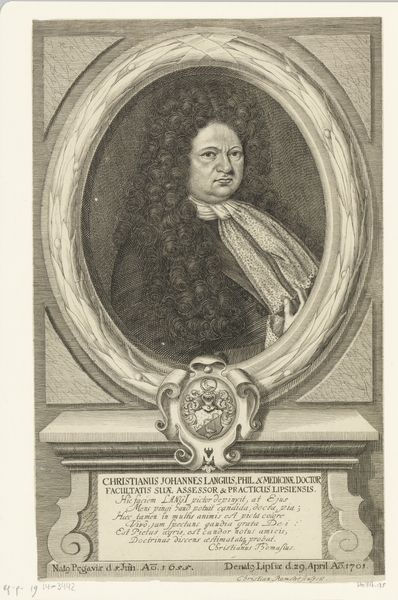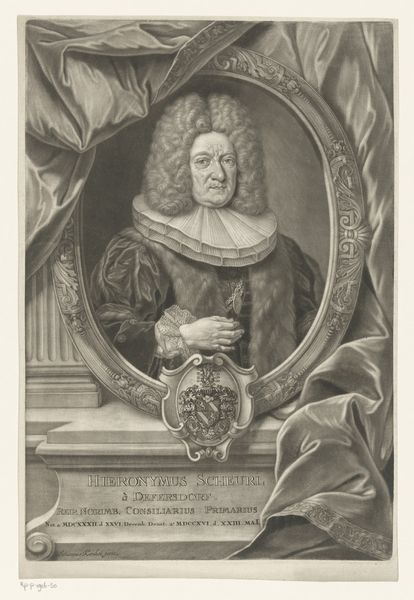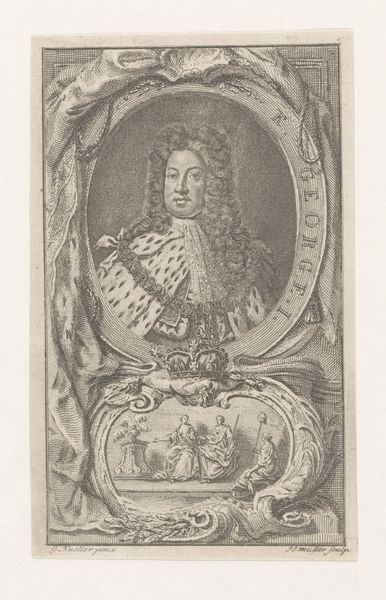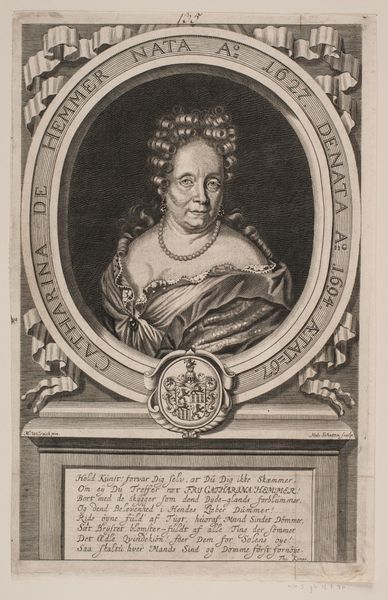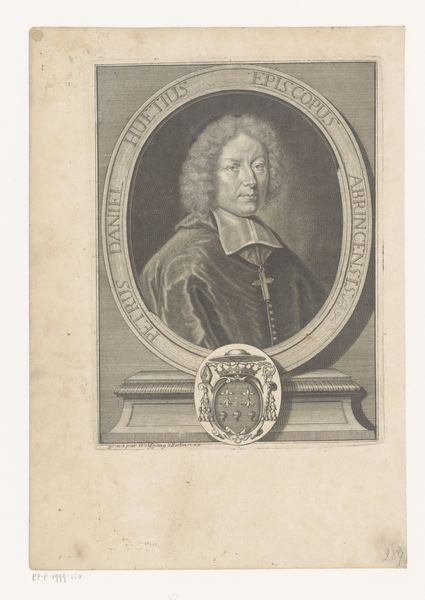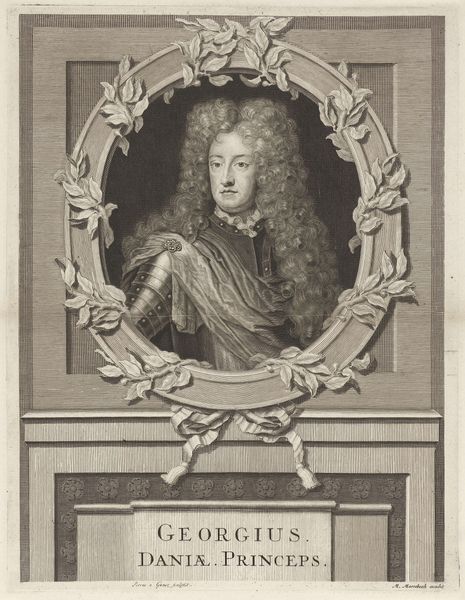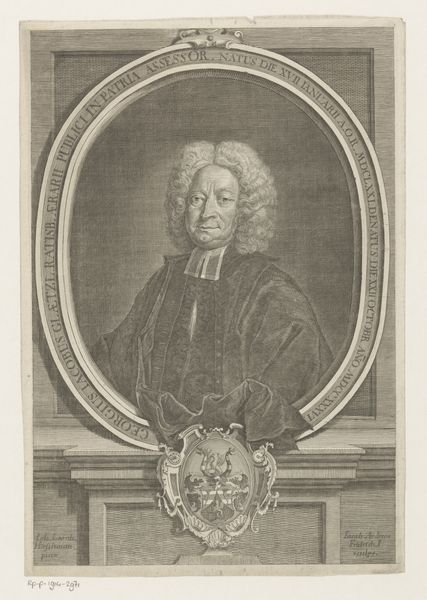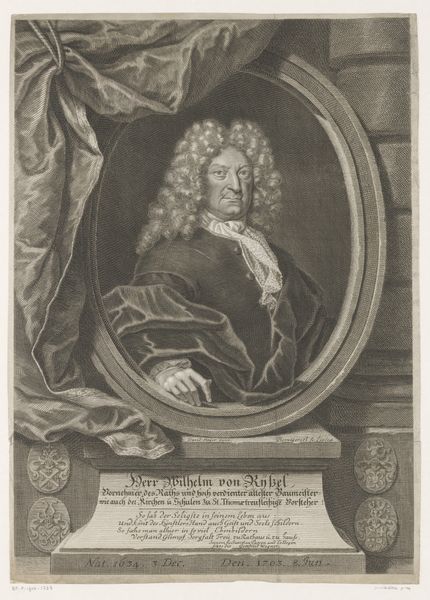
engraving
#
portrait
#
baroque
#
old engraving style
#
caricature
#
history-painting
#
academic-art
#
engraving
Dimensions: height 400 mm, width 273 mm
Copyright: Rijks Museum: Open Domain
Curator: Looking at this piece, what captures your eye? Editor: It’s intricate! The density of line work used to define textures, the way the artist has rendered velvet and fur – you can practically feel them. What's the context here? Curator: We're looking at a portrait engraving, "Portret van Georg Gabriel Paumgartner," dating probably from 1693 to 1704, after Leonhard Heckenauer. As you noticed, it really demonstrates a virtuosity of engraving technique. It's currently housed here at the Rijksmuseum. Editor: The oval format immediately creates a sense of formality, while the detail—the wig, the lace, the ruffled collar—conveys wealth and status. It speaks to a system where outward appearance was meticulously crafted to project power. You can even see the details of the seals in his hands. I imagine the production of such an elaborate engraving would require skilled labor and resources. Curator: Absolutely. Every element seems laden with meaning. The portrait itself functions as a symbol, perpetuating Paumgartner’s memory and societal position. Consider also his family crest prominently displayed at the bottom. How might the symbols present tell his own history? Editor: That's right. The crest definitely root him to the earth and to family lineage and wealth. But beyond Paumgartner himself, this engraving speaks to the broader development of print culture. It embodies the circulation of images and ideas. Engravings, for all their material limitations, facilitated the distribution of imagery to a wider audience than painted portraits could ever reach. This copy makes his power more available than the man. Curator: Indeed. The very act of reproduction changes the function and significance. This portrait becomes both an homage to an individual, Georg Gabriel Paumgartner and an assertion of particular societal values. I notice also the Latin phrases included in the portrait... Editor: For me, the enduring quality of this piece resides in its craft and technique and tells the story of an engraver’s skill alongside a portrait subject's self-fashioning. What's visible is both an artistic object as well as social, technological, and political histories. Curator: I appreciate your analysis. Considering these historical frameworks—the social life and economy surrounding this Baroque portrait opens new avenues of exploration that expand the legacy and impact of this particular artwork.
Comments
No comments
Be the first to comment and join the conversation on the ultimate creative platform.
